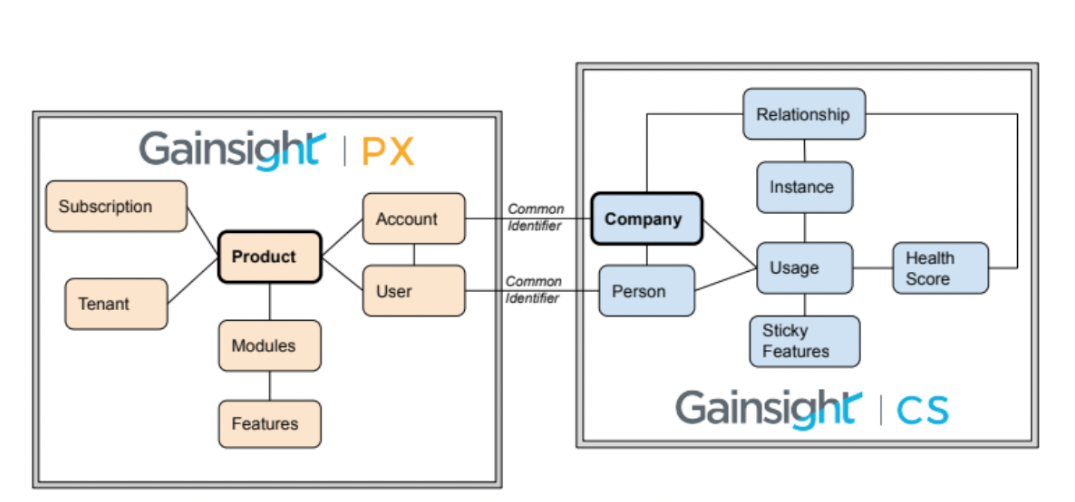Have you ever left a PX+CS integration discussion with your head spinning or wondered if your PX and CS admins are even speaking the same language? If so- you’re not alone! Confusion is often born from the distinct ways we talk about the aspects in each product (i.e., accounts, companies, persons, users, tenants, products, subscriptions, etc..) 🤯
To set your team up for success from the beginning, a basic understanding of the language used across PX and CS is paramount.

- An Account in PX can be associated with a Company in CS and a User in PX is known as a Person in CS.
- When we integrate the 2 systems, we use common identifiers to link together Accounts in PX with Companies in CS and Users in PX with Persons in CS.
- The central notion that we are interested in on the PX side is the Product, which includes Modules, Features, and other UI elements. We collect data on the ways in which Accounts and Users interact with a Product.
- It’s possible that an Account or User may have access to multiple Products. Tenants and Subscriptions are words you might hear used as a way to differentiate between what an Account or User has access to.
- Over on the CS side, the Company is the central notion. The Company many have multiple business units or products by which we are interested in ingesting adoption data from PX. Relationships and Instances are used to organize those disparate products or business units.
- A Person may belong to multiple companies as well and that is when you might hear the term Company-Person to identify Persons and the Company to which they belong.
- In CS, we may be interested in usage metrics not on all features, but just those that are sticky or indicative of healthy use. The metrics can then be used to feed a Health Score.
Use the diagram above to help PX and CS teams speak each other’s language for more meaningful and productive cross-platform conversations.
What tactics does your organization use to make PX and CS conversations more fruitful across teams?

